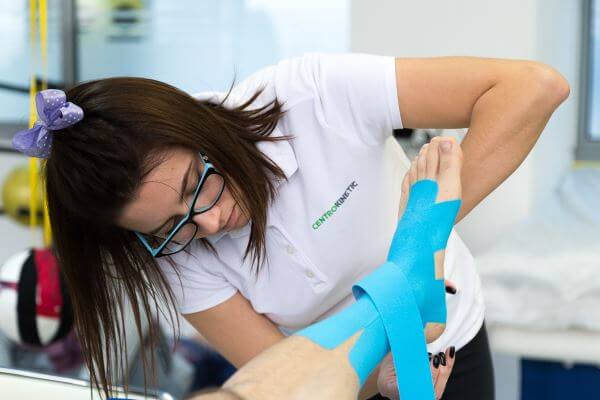See details
READ MORE
Recovery protocol in Achilles tendonitis
Achilles tendonitis is an inflammation of the Achilles tendon, located in the back of the leg and ankle. The Achilles tendon is the strongest and largest tendon in the body. By its contraction, the plantar flexion of the foot occurs, so it is very important during walking and especially when running.Those who practice sports that involve sudden changes of direction and repeated starts and stops have a higher risk of developing Achilles tendonitis. These sports include tennis, squash, football, and basketball. Rugged terrain, inadequate footwear, shallow preparation/heating, and improper training can cause this tendon. A single incident can cause inflammation or, more frequently, stressful movements of greater amplitude than the physiological one can lead to tendinitis. The lesions appear, more frequently, after a period of inactivity, when the tendon is rigid and inflexible.
Women who frequently wear high-heeled shoes are also prone to develop tendonitis because the high heel has the effect of shortening the Achilles tendon. This means that when wearing shoes with a flatter heel, the tendon is stretched, overworked and thus inflammation and pain occur. Sedentary people who engage in high-risk sports, or suddenly start intense physical activity are also prone to develop Achilles tendonitis.

Simptoms
- Achilles area pain during or after physical activity, then the pain appears at rest, is continuous and very intense
- swelling around the tendon
- pain when you walk or run, especially on uphill terrain, on a slope.
- stiffness and pain when the tendon is stretched
- marked morning stiffness
Treatment
The best treatment options will be determined by the severity of the tendonitis. In many cases, a simple treatment, performed at home can eliminate the problem, and in more severe or long-lasting cases, specialized treatment is needed. If the pain persists after a few days of conservative treatment, seek medical advice to avoid more serious injury.Physical rest is the most important treatment measure for tendonitis. Continuing the activity using the inflamed tendon can aggravate the problem.

R.I.C.E treatment - rest, isolation, compression (elastic band), elevation (the leg must be raised). The ankle should be bandaged with an elastic band, not very tight, over which ice is applied for 3-4 days.
Anti-inflammatory drugs help reduce inflammation, pain, and local edema. We recommend 1 tablet of Arcoxia / Voltaren / Movalis in the morning after breakfast.
Physiotherapy and local infiltrations with Kenalog: have a rapid effect, greatly shortening the recovery period. Infiltrations are performed together with a local anesthetic.
Other methods of treatment, such as plaster cast immobilization, may be needed in more severe or recurrent cases, or even surgery to repair a damaged tendon as a last resort. These treatments will signify a longer recovery.
Exercises
All exercises should be performed without pain or excessive stretching in the injured area. The following exercises with Theraband can be performed once or twice a day, under the close monitoring of your physiotherapist.Plantar flexion
With elastic bands anchored around the foot, perform a movement similar to pressing the accelerator pedal. Repeat 30 times.
Dorsiflexion of the ankle
With the help of elastic bands anchored by a hard object, withdraw your fingers to the knees, repeating the movement 30 times.
Ankle Eversion
With elastic bands anchored around your feet, move your injured leg outward. 30 reps.
Inversion of the ankle
Cross your legs with your healthy foot underneath, then, with the help of elastic bands, move your ankle inwards. 30 reps.
Stretching and strengthening program
You can advance to the next stretching program after 2-3 weeks if you no longer feel pain. You can perform these exercises daily, the most favorable time for stretching being at the end of the exercise period described above.

Leg stretching
Keep your heel straight on the floor, with your knee fully extended. Lean forward at the thighs, your hands supporting your weight. When you feel a slight stretch in the back of the leg and knee, hold this position for 15-20 seconds, 3-5 repetitions.
.jpg)
SUCCESSFUL RECOVERY STORIES

MAKE AN APPOINTMENT
CONTACT US
MAKE AN APPOINTMENT
FOR AN EXAMINATION
See here how you can make an appointment and the location of our clinics.
MAKE AN APPOINTMENT




































































































































